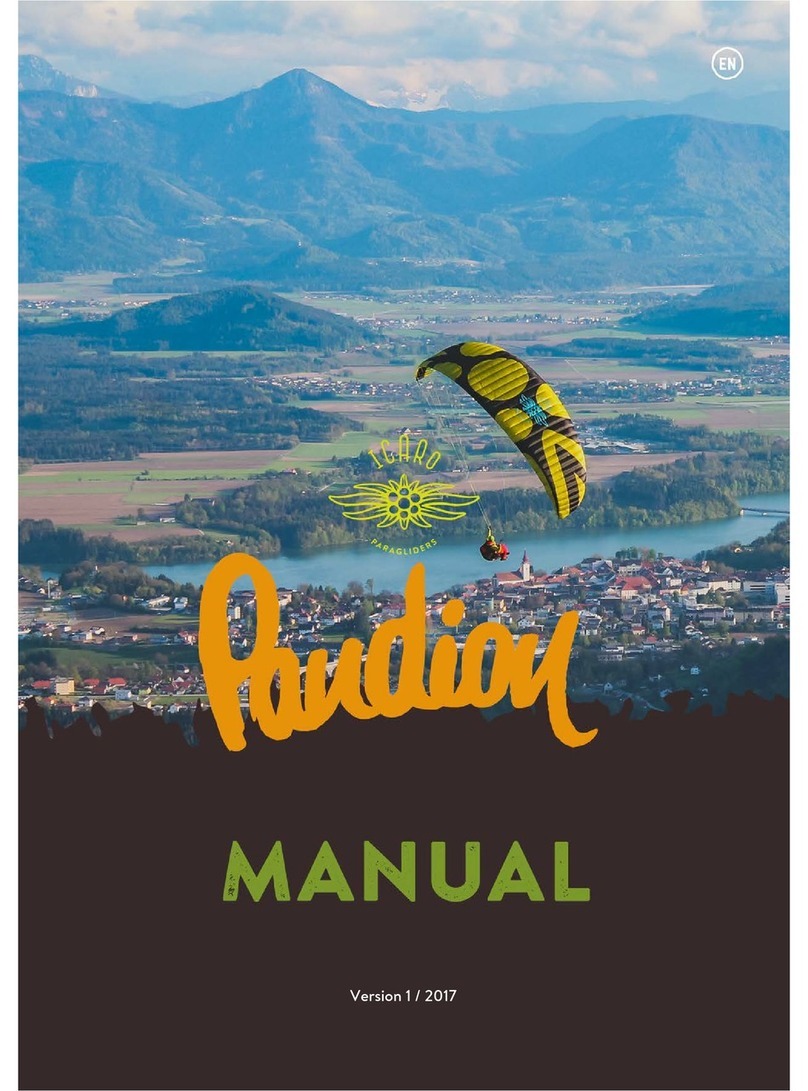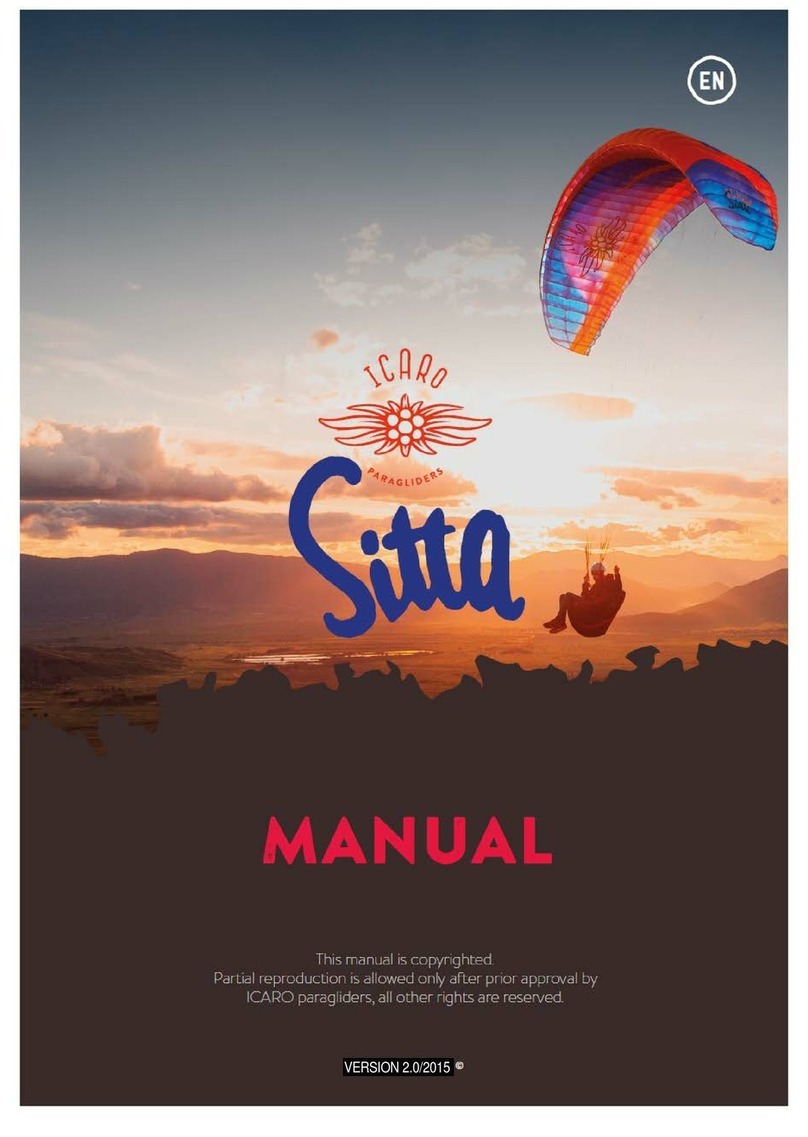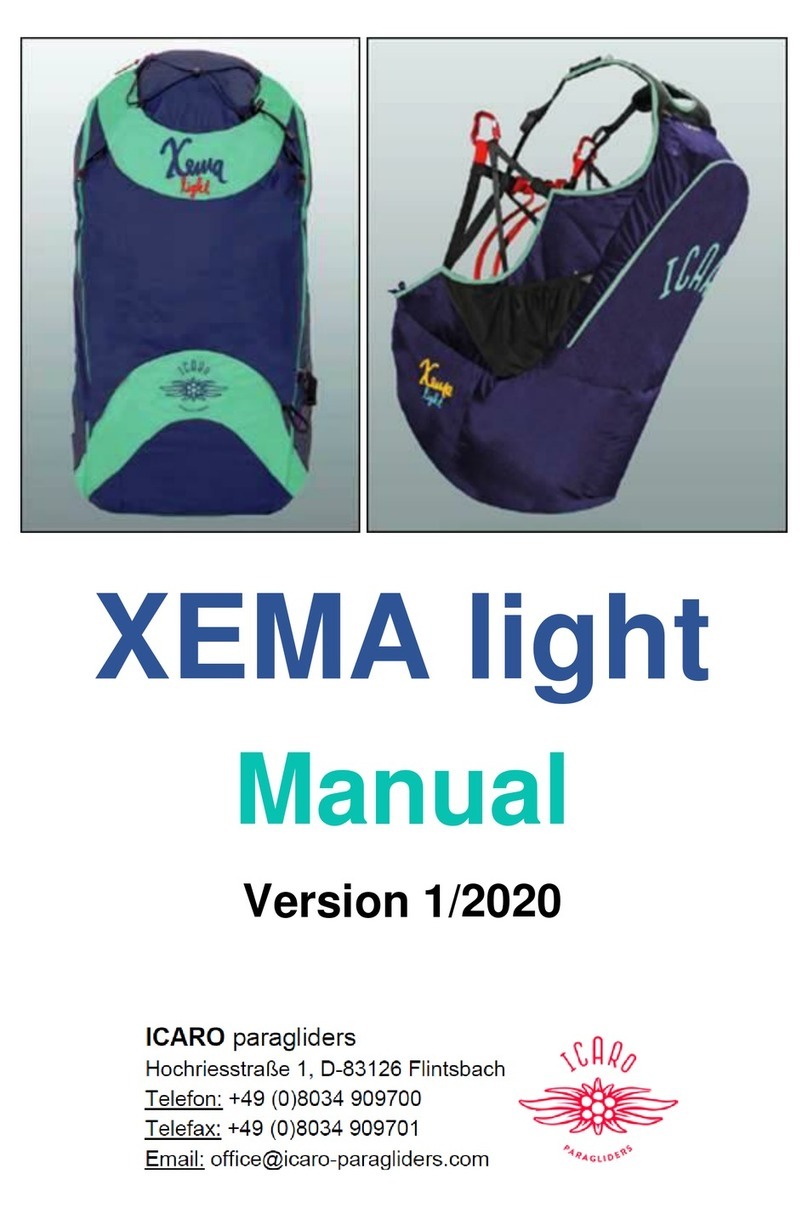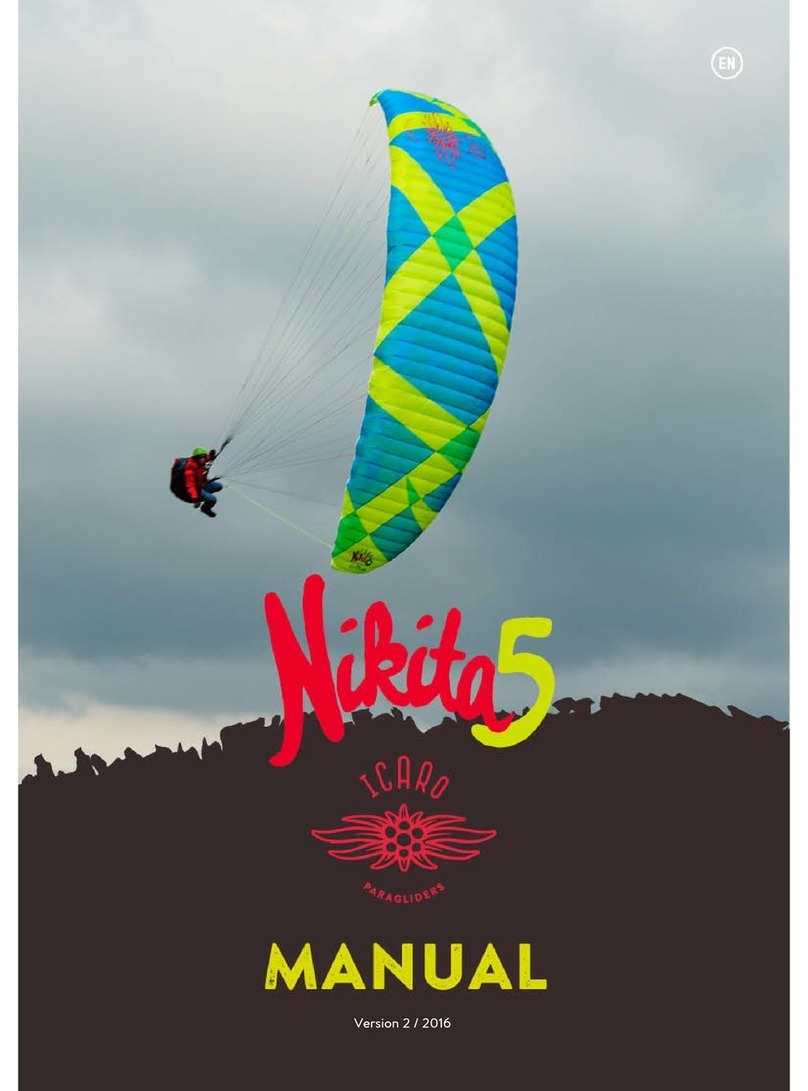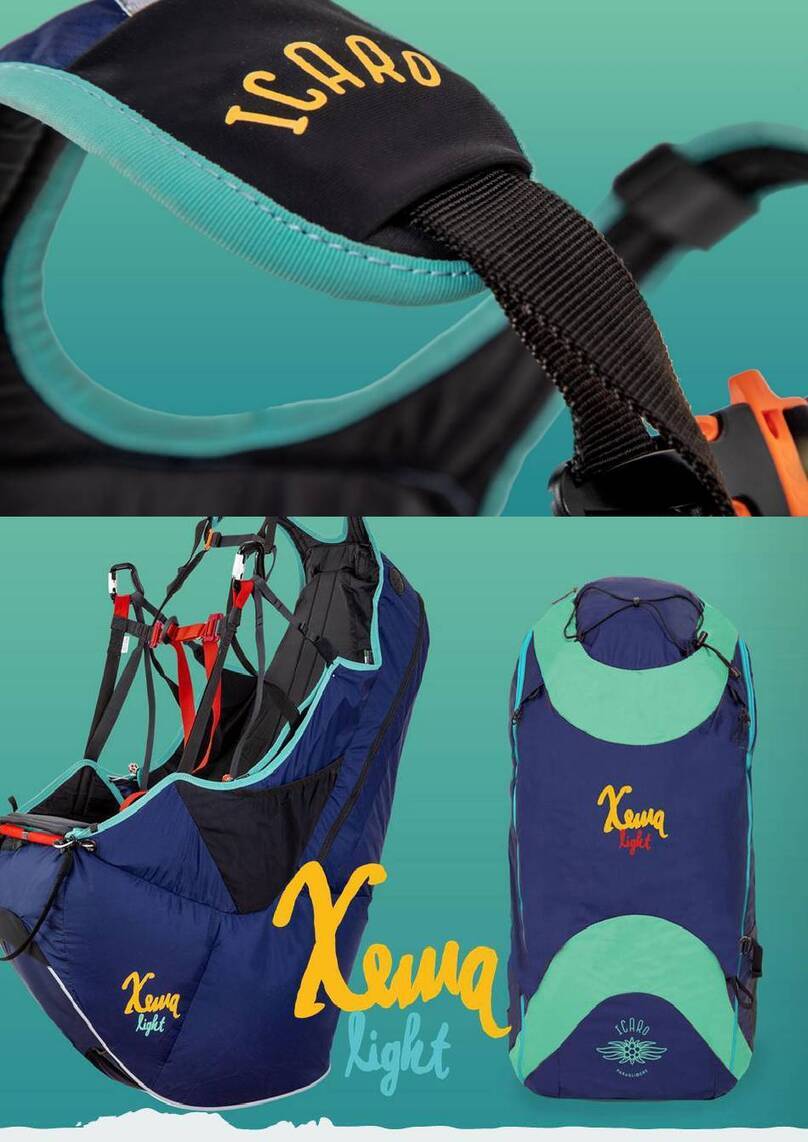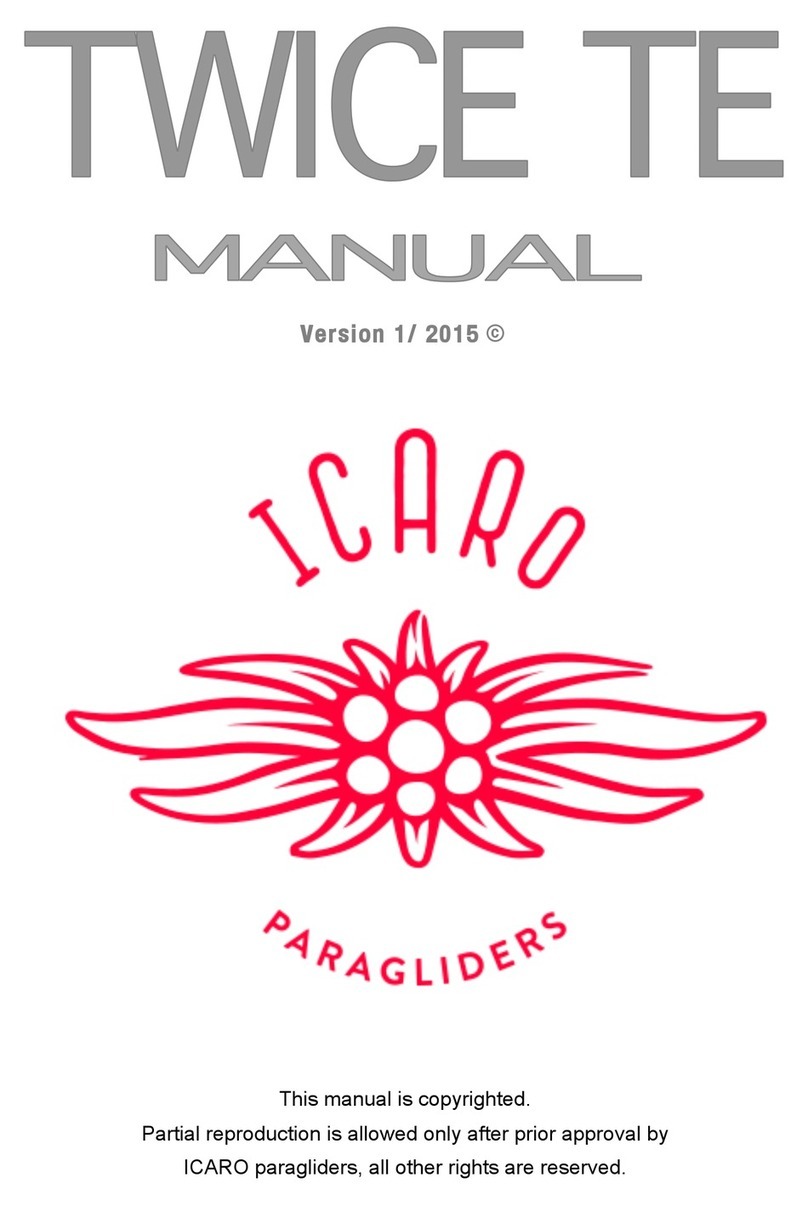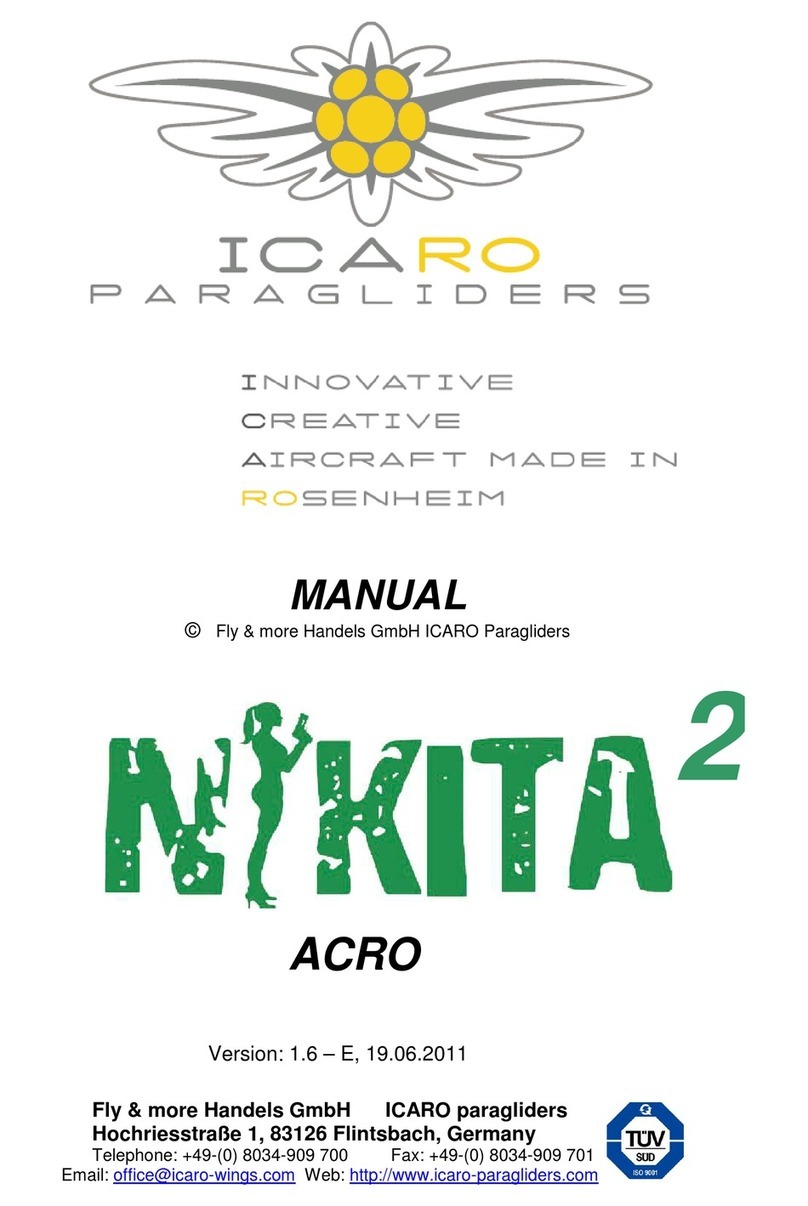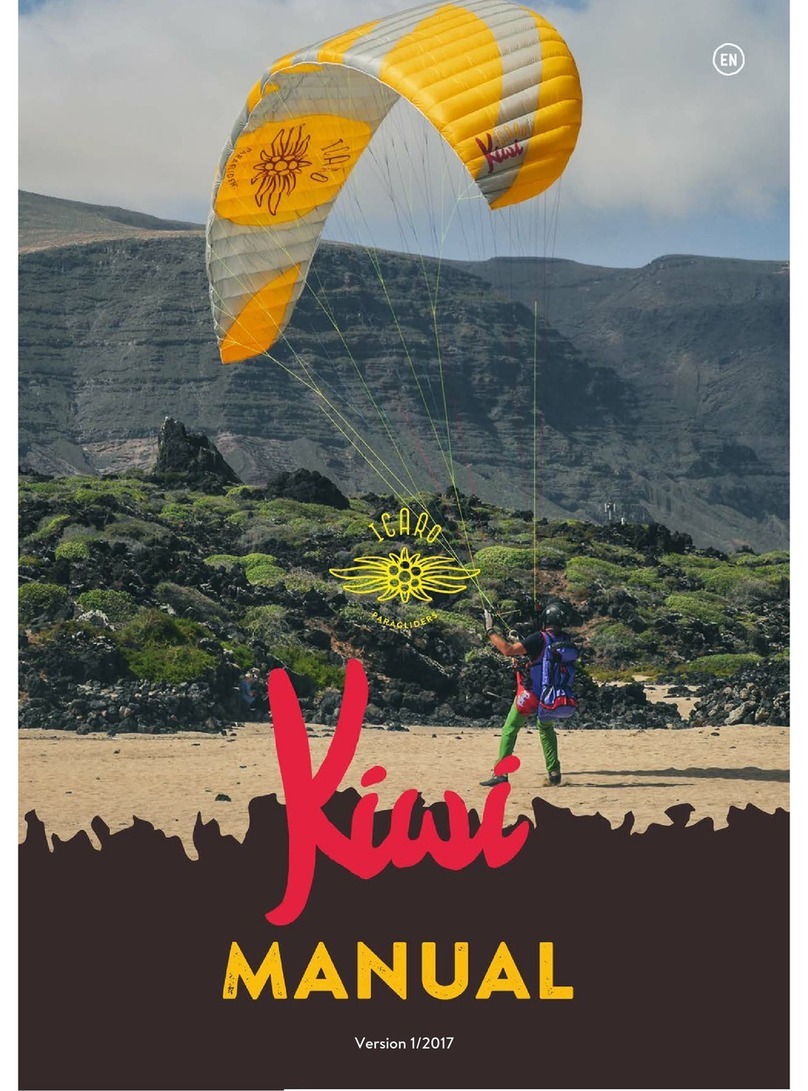
Page 8 of 17
Hold the inner A-risers and the handles of the brakes and use progressive
pressure on the A-risers and the energy of your own body weight until the wing is
fully inflated overhead. The canopy is inflated quickly.
When there is no pull from the lines use slight pressure on the brake. After a few
accelerating steps and at the same time let go of the brakes gently, you will take
off. Then use slight pressure again on the brakes to fly at a speed with minimal
sink rate.
When there is strong wind the reverse launch technique is recommended. Holding
the brakes, turn around to face the wing passing one set of risers over your head
as you turn. We suggest building a "wall" by partially inflating your glider on the
ground, thus sorting out the lines thoroughly.
Check the airspace is clear and gently pull the glider up with inner riser. When the
glider is overhead, check it gently with the brakes, turn and launch. In stronger
winds, be prepared to take a couple of steps towards the glider as it inflates and
rises.
SPEEDUP is allowed for towing.
Active flying
We advise you to apply the brakes at all times whilst flying in turbulences. You
hereby increase the opening angle and the wing is more stable. At the same time
the pilot has a better feeling for the canopy via the brakes. When flying into strong
thermals please pay attention that the canopy does not remain behind the pilot.
This is avoided by releasing the brakes when entering an up-wind to increase
speed. Vice versa the glider must be slowed down with the brakes if the canopy
falls before the pilot when entering a down-wind or exiting a thermal. We
recommend increasing speed when crossing a downwind or during headwind.
This type of flight technique is called “active flying”. The pilot may roll his body with
weight shift to move with the glider when the glider rolls to the right or left. These
subtle adjustments keep the glider flying smoothly.
The more turbulent the weather conditions and when near the ground, the
less acceleration should be used. Using the accelerator decreases the angle
of attack and can make the glider more prone to collapse.
Do not use the acceleration system and brakes at the same time! It is very
dangerous to use both simultaneously as it can result in serious collapses.
The SPEEDUP aims to different types of pilots. On the one hand we want to
approach para-alpinists who are looking for superior launch behavior, for light-
weight, and for high performance at high speed. These qualities are also
interesting for pilots who are looking for a agile soaring-glider which can be flown
at higher wind speeds, than a normal paraglider. Short brake travel, dynamic
reactions and little dampening along all 3 axis require a great deal of feeling and
experience from the pilot. Considering the small size, the SPEEDUP offers well
manageable collapse behavior. The biggest advantage is that the wing is very
stable in turbulences, due to the high wing loading.
Turning
A combined steering technique is suitable for every situation. The SPEEDUP is
very agile and reacts to steering impulses quickly and directly. Strong, one sided
pulling of the brakes brings the glider into an obvious side angle and the glider flies
fast steep curves until spiral dive begins.



